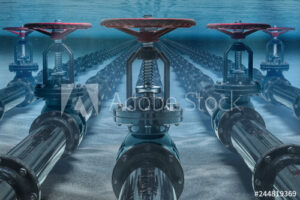A Block Valve is another name for a shutoff valve. A block valve stops the flow or changes the direction of the product from a storage tank to a dispensing point.
Block valves also called shutoff valves are flow control mechanisms put on storage tanks, and storage tank pipelines to stop the flow of fluid.
In most cases, these mechanisms are controlled electromagnetically causing an open/close state that is controlled by a solenoid.
The fluid stops flowing at the valve. These types of valves can be used both to stop and direct the flow of the product to another pipe in the flow network.
The pipelines at oil refineries and oil depots are complex. Different kinds of refined products have to be directed toward different tanks. The shutoff valves used to direct the flow of product to the correct location are either computer-controlled or done manually. Think about all the oil tanks in an oil depot. There are multitudes of types of products stored at these facilities. Shutoff valves at work behind the scenes direct the correct gasoline from the correct tank to the nozzle connected to the driver’s truck. They could be picking up gas, diesel, heating oil, or jet fuel so the right product has to be directed to the truck. In most cases, these valves are computer-controlled. If manual override is required it might have to do with a power outage or another difficulty.
Block valves are also called shutoff valves. They produce either an on or off state for liquid flow.
Offshore oil rigs have shutoff valves that are underwater. They are both electronic and have a manual override. If the shutoff valve has to be opened or closed then someone has to go underwater to do it.

























